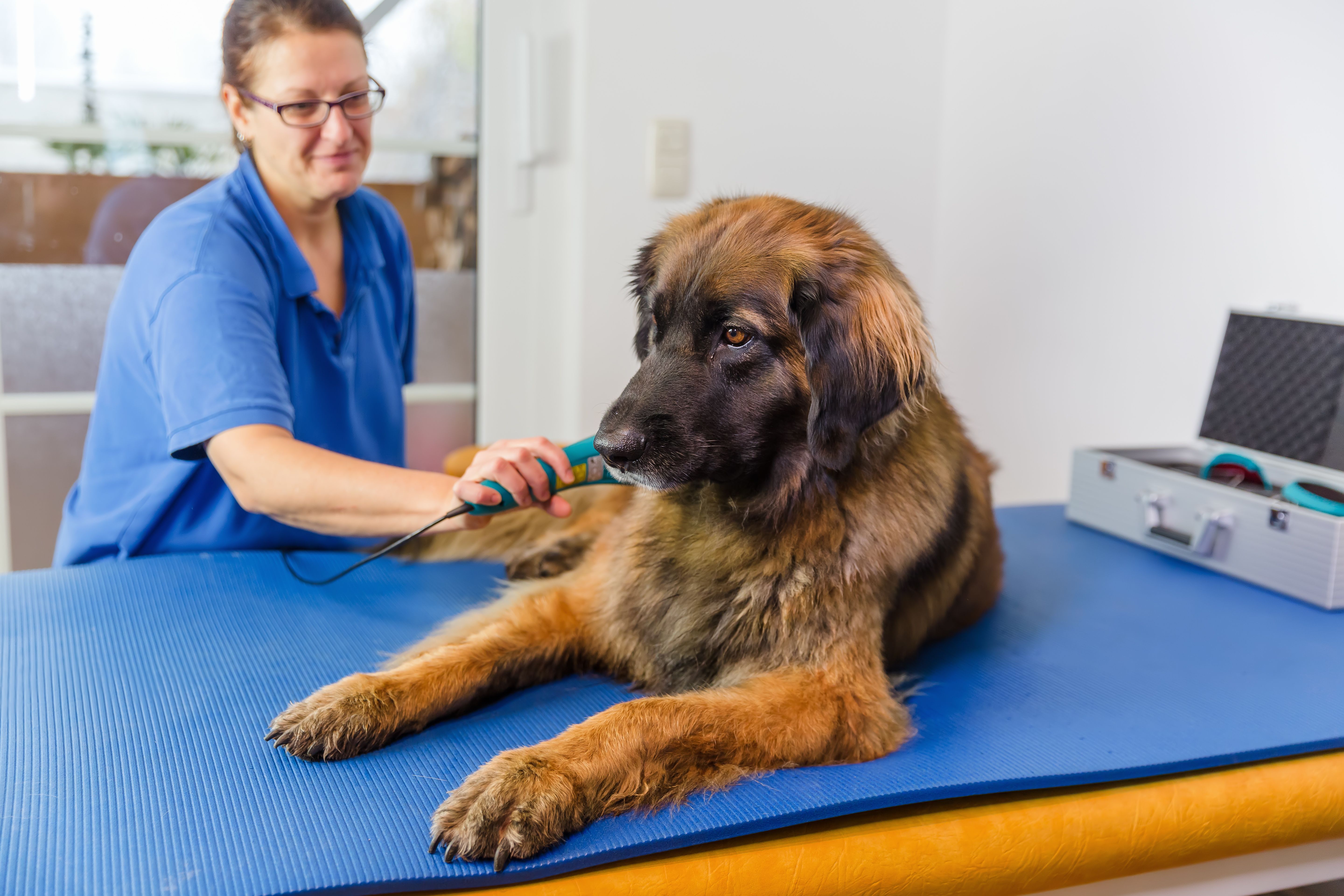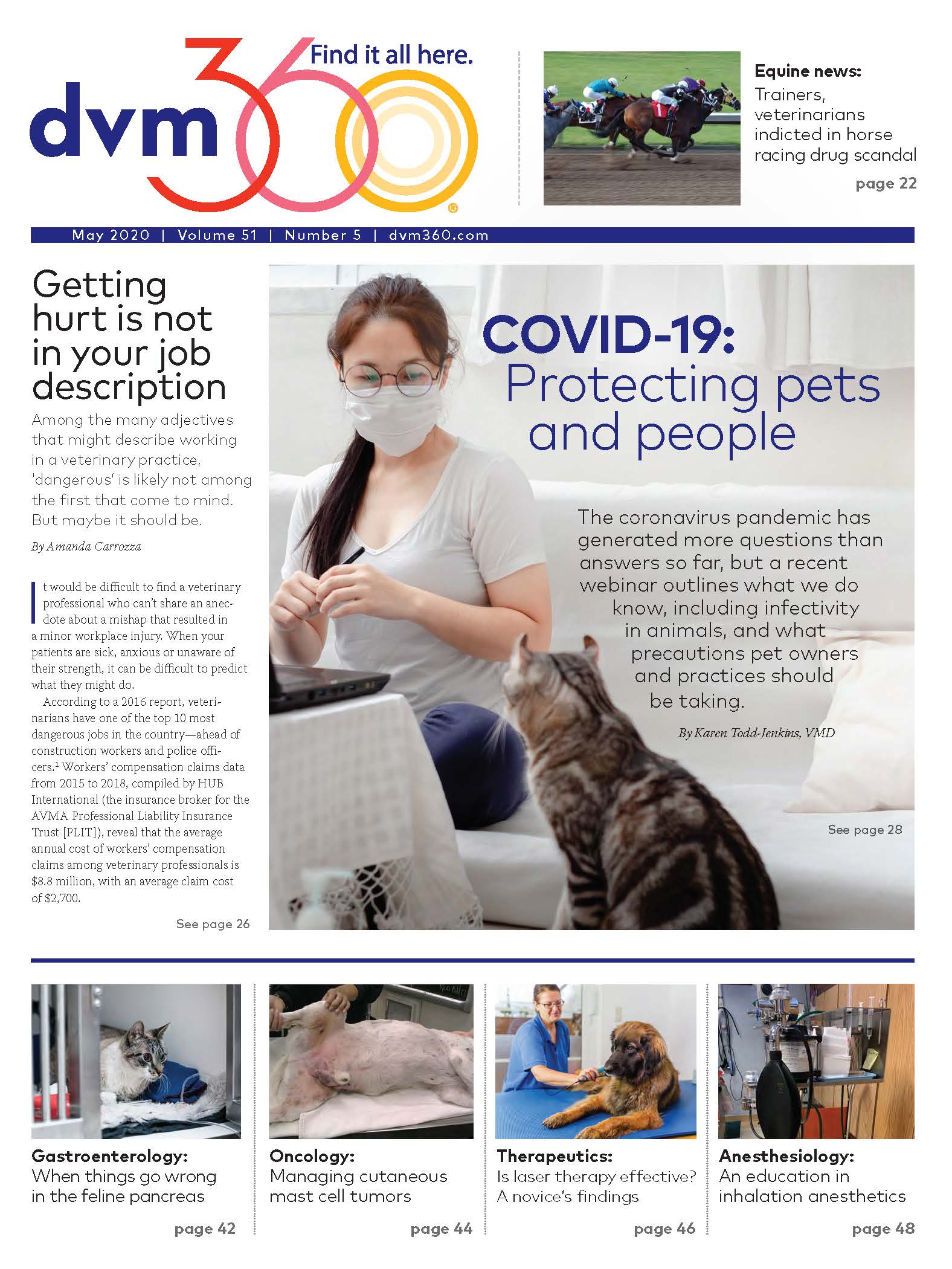Efficacy of laser therapy in veterinary medicine: thoughts from a novice
Staying current with technological advances in veterinary medicine is difficult, but it’s an important part of providing excellent patient care.
Christian Müller / stock.adobe.com

Like many clinicians, I find it daunting to stay current with the many evolving topics in veterinary medicine. Photobiomodulation (also referred to as low-level laser therapy [LLLT] or cold laser) represents a particularly challenging modality to approach for several reasons. For one, colleagues who know more about LLLT than I do have a wide range of often strong opinions regarding its effectiveness. Also, the biophysics involved are less familiar to me than are other aspects of veterinary medicine. Nevertheless, the use of LLLT is quickly becoming widespread for a wide range of applications, and I thought I should learn a bit more about it.
For those who can relate, what follows is my novice attempt to reach an evidence-based and open-minded opinion about the efficacy of LLLT in small animal patients.
A broad overview
As I started my inquiry, I found that an American Society of Laser Medicine and Surgery exists, with an official journal: Lasers in Surgery and Medicine. This journal ranks in the top 25% for journal impact factor (which reflects frequency of citation) for both dermatology and surgery.
After reading articles in this journal and related others, two things stood out to me:
- The reports on LLLT are largely encouraging.
- Unfortunately, a novice is in no position to rigorously evaluate this massive body of data.
From what I did read, the benefits of LLLT in people and laboratory models are numerous: cosmetic skin applications, wound healing, edema reduction, return to function from sports injuries, improving vaginal health, dental healing, head trauma recovery and many more. The efficacy of LLLT did seem hard to discount after this reading. Of the studies that reported discouraging results, most generally concluded with confidence that optimization of protocols would improve outcomes.
Because I lacked a clear, evidence-based conclusion from my broad review, I turned specifically to the veterinary literature. Searching for small animal investigations from major journals, I found nine recent publications. All happened to study dogs, and applications of LLLT were identified in dermatology, tibial plateau leveling osteotomy (TPLO) and intervertebral disk disease (IVDD).
Exploring the veterinary research
Dermatology studies
Most of the veterinary research on LLLT relates to applications for the skin. Two recent articles evaluated the use of laser for wound healing in healthy skin. In the first study, the investigators created and then closed 20 incisions in intact male beagles.1 No differences were found between LLLT or sham treatment for epithelization, contraction or histopathology. The same study also looked at the effect of LLLT on 20 incisions that were left open to heal, and again found no effect.
In a second study,2 LLLT was used in 10 female dogs during bilateral flank spay procedures. The investigators found relatively less necrosis and fewer perivascular lymphocytes in the incisions in the LLLT group at day 7, but more perivascular lymphocytes in the LLLT group at day 14. No differences were found between groups visually during healing or with any other histologic variable. Taken together, these two studies of healing of healthy skin with LLLT are discouraging.
Two studies investigated LLLT use in abnormal skin. In a 2014 study published in Veterinary Dermatology, Olivieri et al.3 reported a dramatic improvement in canine noninflammatory alopecia using LLLT, in that much more fur grew with LLLT than in a control group. In the same journal and year, Stich and colleagues4 found no effect of LLLT on pedal pruritis due to atopy.
Surgery studies
Three reports on the use of LLLT in promoting healing after TPLO surgery have been published since 2017. The largest study, reported in Veterinary Surgery in 2018,5 examined 95 dogs and found LLLT-associated improvement with regard to owner assessment of gait. No improvement was seen with regard to pain management or radiographic healing. Results of a 2017 study6 showed that LLLT was associated with improved surgical limb function eight weeks postoperatively in 27 dogs undergoing TPLO, as evidenced by more force applied to a plate. The smallest study,7 involving 12 dogs, found more lameness and more pain during the first postoperative month in the LLLT group. The investigators found no differences at 8 weeks, or at any time point, radiographically or cytologically. So, the two larger studies were encouraging, and the smallest one was discouraging.
Two reports on dogs undergoing hemilaminectomy examined postoperative use of LLLT. A 2012 study involving 36 dogs demonstrated dramatic shortening of time to return to ambulation with LLLT (median of 3.5 days vs. 14 days for controls).8 A study from 2017 compared 11 dogs treated with LLLT postoperatively with 10 dogs treated with sham LLLT.9 No differences were found between the LLLT and sham groups at several recovery benchmarks, including initial limb movement, ability to stand with some support, ability to walk at least three steps, and ability to walk at 10 days.
Conclusions
Making a broad conclusion about the effectiveness of LLLT based on the above nine canine studies is fraught on several levels, including that the studies involve different disease states and different protocols. Considering that substantial caveat, however, I can draw one conclusion: Five of these nine studies (55%) revealed at least one metric showing a benefit of LLLT compared with control.
Of note, the above text was reviewed at a well-regarded specialty facility that commonly uses LLLT. Feedback included the facts that several of the referenced discouraging studies were flawed by not reporting all critical parameters, and that such discouraging results could be attributed to underdosing, which is often a problem in the use of LLLT.
While this article was undergoing review, Veterinary Dermatology published an article on the use of LLLT in 36 dogs with interdigital pyoderma.10 The investigators found that LLLT shortened resolution of lesion time from 10.4 to 4.3 weeks.
Now at the end of my initial attempt to form an opinion on LLLT efficacy in small animal patients, I would emphasize my humility in the face of others’ expertise. That noted, following are my conclusions from exploring the recent articles about LLLT in major small animal publications:
- I see discouraging data for LLLT use in healing healthy skin incisions as well as conflicting reports for spinal cord injury recovery.
- Use of LLLT in TPLO recovery seems more promising than not, and perhaps this information can be generalized for all orthopedic surgeries.
- Effectiveness in diseased skin seems dependent on the condition.
I look forward to further research as it becomes available, of course, but I now feel comfortable referring cases for LLLT as long as the status of current research is made clear to clients.
Dr. Levinson became board certified in veterinary emergency and critical care in 2010. He practices at Brenford Animal Hospitals in Dover, DE, where his interests include echocardiography and fostering a Fear Free environment.
References
- Kurach LM, Stanley BJ, Gazzola KM, et al. The effect of low-level laser therapy on the healing of open wounds in dogs. Vet Surg 2015;44(8):988-996.
- Gammel JE, Biskup JJ, Drum MG, et al. Effects of low-level laser therapy on the healing of surgically closed incisions and surgically created open wounds in dogs. Vet Surg 2018;47(4):499-506.
- Olivieri L, Cavina D, Radicchi G, et al. Efficacy of low-level laser therapy on hair regrowth in dogs with noninflammatory alopecia: a pilot study. Vet Dermatol 2015;26(1):35.
- Stich AN, Rosenkrantz WS, Griffin CE. Clinical efficacy of low-level laser therapy on localized canine atopic dermatitis severity score and localized pruritic visual analog score in pedal pruritus due to canine atopic dermatitis. Vet Dermatol 2014;25(5):464.
- Renwick SM, Renwick AI, Brodbelt DC, et al. Influence of class IV laser therapy on the outcomes of tibial plateau leveling osteotomy in dogs. Vet Surg 2018;47(4):507-515.
- Rogatko CP, Baltzer WI, Tennant R. Preoperative low-level laser therapy in dogs undergoing tibial plateau levelling osteotomy: A blinded, prospective, randomized clinical trial. Vet Comp Orthop Traumatol 2017;30(1):46-53.
- Kennedy KC, Martinez SA, Martinez SE, et al. Effects of low-level laser therapy on bone healing and signs of pain in dogs following tibial plateau leveling osteotomy. Am J Vet Res 2018;79(8):893-904.
- Draper WE, Schubert TA, Clemmons RM, et al. Low-level laser therapy reduces time to ambulation in dogs after hemilaminectomy: a preliminary study. J Small Anim Pract 2012;53(8):465-469.
- Bennaim M, Porato M, Jarleton A, et al. Preliminary evaluation of the effects of photobiomodulation therapy and physical rehabilitation on early postoperative recovery of dogs undergoing hemilaminectomy for treatment of thoracolumbar intervertebral disk disease. Am J Vet Res 2017;78(2):195-206.
- Marchegiani A, Spaterna A, Cerquetella M, et al. Fluorescence biomodulation in the management of canine interdigital pyoderma cases: a prospective, single-blinded, randomized and controlled clinical study. Vet Dermatol 2019;30(5):371.
